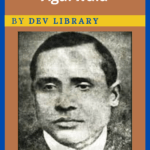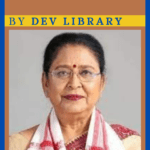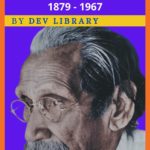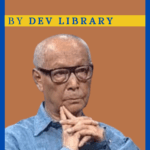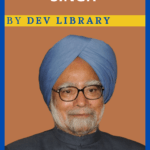Mohammad Hidayatullah, a politician, educationist, writer, linguist, is one of the most important entities in the social life of India. Mohammad Hidayatullah, who has been responsible for the society throughout his life, took many groundbreaking steps in the field of justice. Mohammad Hidayatullah was the only Indian in the history of India to hold many high positions. It may be recalled that he held the office of the Chief Justice of India, the Vice President of India, the President-in-charge of India.

Biography of Mohammad Hidayatullah
| Name | Mohammad Hidayatullah[1] |
| Date of Birth | 17 December 1905 |
| Place of Birth | Lucknow, United Provinces of Agra and Oudh, British India (now Uttar Pradesh) |
| Father’s Name | Khan Bahadur Hafiz Mohammad Wilayatullah |
| Mother’s Name | Mohammadi Begum |
| Education | 1/ Government High School, Raipur 2/ Morris College, Nagpur 3/ Trinity College, University of Cambridge |
| Awards | 1/ Officer of the Order of the British Empire (OBE), 1946 2/ Night of Mark Twin, 1971 3/ Proud Past Alumni Award from Allahabad University 4/ Shiromani Award, 1986 5/ Architecture of India Award, 1987 |
| Death | September 18, 1992 (age 86) |
Early Life and Education of Mohammad Hidyatullah
Mohammad Hidayatullah, who was appointed as the 11th Chief Justice of India, was born on December 17,1905, Lucknow, United Provinces of Agra and Oudh, British India (now Uttar Pradesh) into a well known family. Born into a highly educated family, Mohammad Hidayatullah’s father’s name is Khan Bahadur Hafiz Mohammad Wilayatullah and mother’s name is Mohammadi Begum.
Mohammad Hidayatullah’s father Khan Bahadur Hafiz Mohammad Wilayatullah was a renowned Urdu poet. For which Mohammad Hidayatullah got an atmosphere of literary discussion at home. It may be recalled that Mohammad Hidayatullah’s father was a Gold medalist in mathematics from Aligarh University in 1897. Subsequently, in 1928, Mohammad Hidayatullah’s father also served as ICS. His father also served as a member of the Central Legislative Assembly from 1929 to 1933. Growing up in a socio-political educational and literary-cultural environment, Mohammad Hidayatullah was by nature a brilliant student.
In 1922, after completing his primary education from the Government High School in Raipur, he got admission in Morris College in Nagpur. It was from this college that Mohammad Hidayatullah was selected Phillips Scholar in 1926. After his graduation in 1926, he was awarded the Malak Gold Medal. It may be recalled that during this period many Indians travelled abroad to study law. Mohammed Hidayatullah was of no exception. He also went to UK to study law and enrolled at the Trinity College at the University of Cambridge in 1927 and obtained both B.A. and M.A. degrees from there. It may be recalled that Mohammad Hidayatullah won the gold medal in 1930 from Trinity College under the University of Cambridge by securing the second position in the first class in law subjects. Later, at the age of 25, Mohammad Hidayatullah was summoned to appear in the famous Lincoln’s Inn. Importantly, in 1929, Mohammad Hidayatullah was elected and served as the President of the Indian Majlis at Cambridge. He also pursued English and Law Tripos from the renowned Lincoln’s Inn. It is to be noted that he secured the position of Barrister-at-Law in 1930.
Also Read: Biography of Giani Zail Singh
Career of Mohammad Hidayatullah
After his graduation, he returned to India and Mohammad Hidayatullah joined the Nagpur High Court in 1930 as an advocate and served till 1946. In addition, he was appointed a Government Pleader in the High court at Nagpur in 12 December 1942 and served in this post till August 1943. From August 2, 1943 to 1946, he served as Advocate General of the Central Provinces in the High Courts of Berar (now Madhya Pradesh). It is to be noted that Hidayatullah was the youngest person to serve as the Advocate General in Madhya Pradesh at the age of 37.
Mohammad Hidayatullah, who served as a member of the Nagpur Bar Council from 1943 to 1946, was appointed as an Additional Judge of that High Court of Central Provinces and Berar on June 24, 1946. Subsequently, Mohammad Hidayatullah was appointed as a permanent judge on September 13, 1946, until being elevated to Chief Justice of the Nagpur High Court.
Importantly, in 1946, Mohammad Hidayatullah was honoured by George (VI) as Officer of the Order of the British Empire (OBE). Subsequently, on December 3, 1954, Mohammad Hidayatullah became the Chief Justice of the Nagpur High Court. At that time, Hidayatullah was the youngest person to hold the post of Chief Justice of a High Court. Subsequently, Mohammad Hidayatullah served as the Chief Justice of the High Court of Madhya Pradesh between November 1,1956 and November 29, 1958.
On December 1,1958, at the age of 52, he was elevated as a Judge of the Supreme Court of India. Importantly, Mohammad Hidayatullah became the youngest judge to hold the judge’s post in the history of the Supreme Court of India at that time. After serving as a judge for nearly 10 years, subsequently, Mohammad Hidayatullah became the 11th Chief Justice of India on February 28, 1968. He is the first Muslim in India to hold the post of Chief Justice of India. It may be recalled that Mohammad Hidayatullah had retired on December 16, 1970.
Mohammad Hidayatullah, who performed his duties as a court advocate, judge, free judge, over a long period of time, delivered a verdict of around 461 judgments. Hidayatullah mainly conducted trial in criminal matters, direct taxes, constitutional law matters.
Books written by Mohammad Hidayatullah
Importantly, it is not that Mohammad Hidayatullah was not only occupying the matter of law, he was also in possession of the subject of language. In view of this, Hidayatullah wrote a number of books on the subject of law as well as other subjects. The name of his autobiography is “My own Boswell”, apart from this, other books published by him are: ‘Democracy in India and the Judicial Process (1966)’, ‘The South-West Africa cases (1967)’, ‘USA and India: All India Reporter (1977)’, ‘Judicial Methods (1970)’, ‘Constitutional law of India: Bar Council of India Trust (1984)’, ‘Justice Hidayatullah on commercial laws (1982) and so on.
Teaching Career and other Associations
Hidayatullah became involved in many other aspects of Indian social life in parallel with his judicial career. It may be recalled that he served as a lecturer in Jurisprudence and Mahomedan Law at the University College of Law under Nagpur University from 1935 to 1943. Subsequently, he served as the Dean of the Faculty of Law at Nagpur University from 1949 to 1953. He served as a spokesperson of law from 1954 to 1958 in Court Vikram University, Sagar University and Aligarh Muslim University. He was a Chancellor of the Delhi University from 1968 to 1970. He was the President of the Indian Law Institute from 1963 to 1970, President of the Law Association (Indian Branch) from 1968 to 1970 and of the Indian Society of International Law in 1969 to 1970.
Importantly, Mohammad Hidayatullah was also a member of the Nagpur Municipal Committee (1931-33), Member of the Nagpur University’s Executive and Academic Councils (1934 -1953) and the Nagpur Development Trust (1943-45) while practicing law in the High Court of Nagpur.
In 1982, he served as president of the Indian Red Cross Society. He was also associated with the Hunger Project of the United States, the World Association of Orphans and Abandoned Children in Geneva, the Independent Commission on International Humanitarian Problems.
Presidency of Mohammad Hidayatullah
While Mohammad Hidayatullah was serving as the Chief Justice of India, the then President Zakir Hussain died suddenly on May 3, 1969. The Vice President of India V.V. Giri became the acting President. But later V.V. Giri resigned from both the posts of president-in-charge and vice-president to become the presidential candidate. Because of which Mohammed Hidayatullah served as the acting President of India for a very short period from July 20, 1969 to August 24,1969. During his Presidency the visit of President of the United States Richard Nixon to India made his presidential tenure even more historic.
Mohammad Hidayatullah was elected as the Vice President of India after his retirement as the Chief Justice of India. It is to be noted that as a vice president, he served with distinction from 1979 to August 1984. He won the respect as a vice-president for his impartiality and independence.
It is important to note that Zail Singh was the president of India when Mohammad Hidayatullah was the vice president. It may be recalled that in 1982, the then President Zail Singh went to the U.S for medical treatment. Due to which Vice President Mohammad Hidayatullah took over as the President-in-charge from October 6,1982 to October 31, 1982. In this way, he served as the President-in-charge twice.
Conclusion
Mohammad Hidayatullah, who had the privilege of holding many high positions in the Constitution of India, passed away on September 18, 1992, at the age of 86. Hidayatullah’s servings in all three positions made him unique among the other members of the Indian history. Hidayatullah became the only person to have served in all three offices of Chief Justice of India, President of India, and the Vice President of India. Mohammed Hidayatullah will always be forever alive among the new generation because of his skills, personality, eloquence, uniquness, and talent.
FAQ’s
1. When and where was Mohammad Hidayatuullh born?
Ans: Hidayatullah was born on December 17, 1905, Lucknow, United Provinces of Agra and Oudh, British India (now Uttar Pradesh).
2. Who is the youngest Chief Justice of India?
Ans: Mohammad Hidayatullah.
3. Who is the Sixth Vice President of India?
Ans: Mohammad Hidayatullah.
4. For how many years did Hidayatullah served as President-in-charge?
Ans: While Mohammad Hidayatullah was serving as the Chief Justice of India, the then President Zakir Hussain died suddenly on May 3, 1969. The Vice President of India V.V. Giri became the acting President. But later V.V. Giri resigned from both the posts of president-in-charge and vice-president to become the presidential candidate. Because of which Mohammed Hidayatullah served as the acting President of India for a very short period from July 20, 1969 to August 24,1969.
5. When did Mohammad Hidayatullah sworn in as a Vice President of India?
Ans: Mohammad Hidayatullah was elected as the Vice President of India after his retirement as the Chief Justice of India. It is to be noted that as a vice president, he served with distinction from 1979 to August 1984.
6. When and in what age did Mohammad Hidayatullah breathed his last?
Ans: Hidayatullah breathed his last on September 18, 1992, at the age of 86.

Hi, I’m Dev Kirtonia, Founder & CEO of Dev Library. A website that provides all SCERT, NCERT 3 to 12, and BA, B.com, B.Sc, and Computer Science with Post Graduate Notes & Suggestions, Novel, eBooks, Biography, Quotes, Study Materials, and more.


